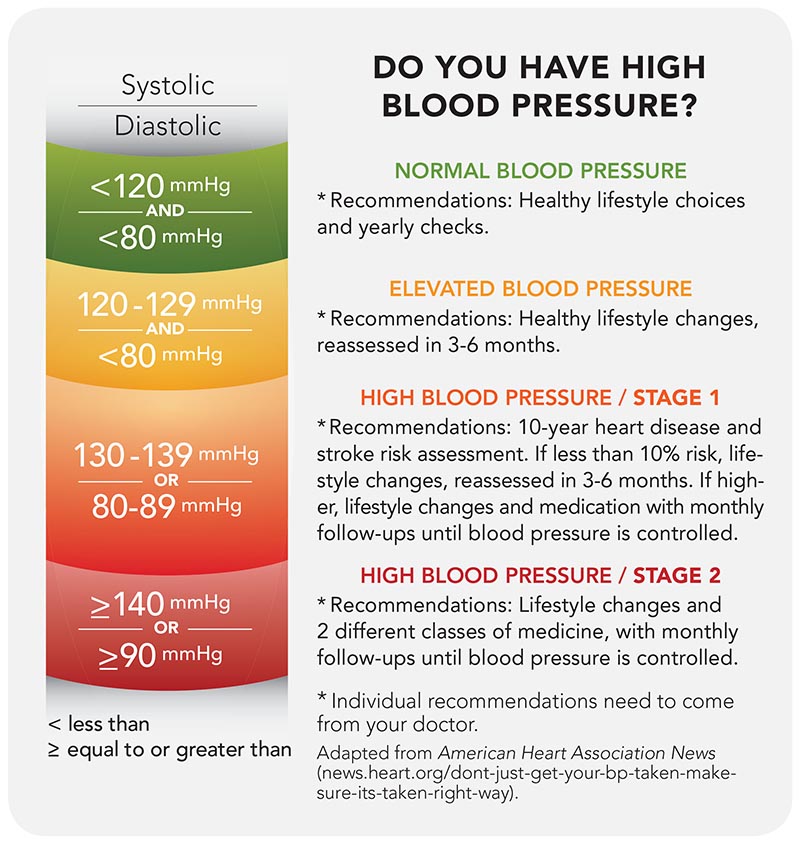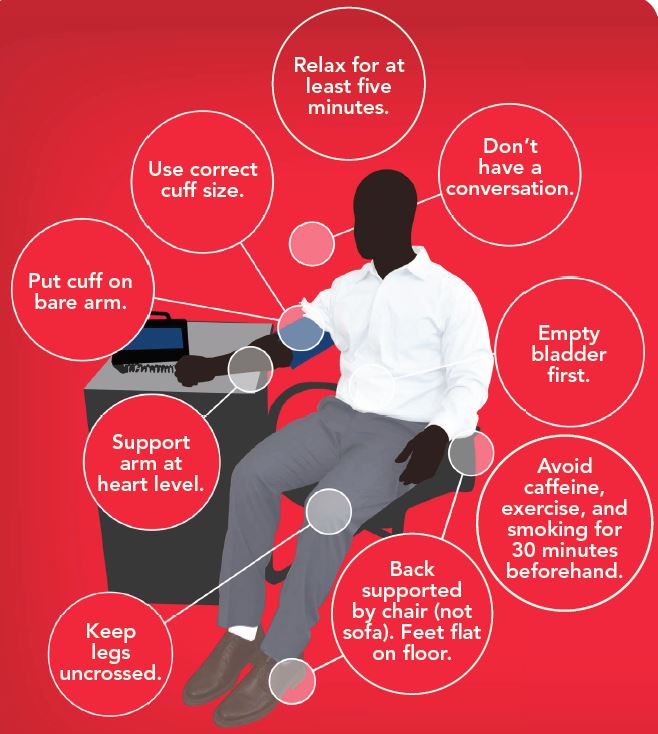More people have hypertension, say the latest guidelines

Nearly half of U.S. adults now have high blood pressure, according to the latest guidelines from the American Heart Association and the American College of Cardiology. Here’s what’s changed.
What’s new
Experts now say that nearly one out of two—rather than one out of three—adults have high blood pressure, or hypertension. Why?
Doctors used to diagnose hypertension if your blood pressure was above 140 systolic (the higher number) or above 90 diastolic (the lower number). But that doesn’t capture everyone at risk.
“People in the 130-to-139 systolic or 80-to-89 diastolic range are at double the risk for a heart attack or stroke compared to people with normal blood pressure,” says Paul Whelton, professor of epidemiology at the Tulane School of Public Health and Tropical Medicine and lead author of the new guidelines.
“And we have good data from lifestyle and drug trials that getting pressures below that level is beneficial.”
That range is now called “stage 1 hypertension.” (It includes many people who had “prehypertension,” according to the old guidelines.)
But that doesn’t mean that half of all adults need to take drugs to lower their pressure.
“Some people think that this is a conspiracy by the pharmaceutical industry to sell more drugs,” says Whelton. “But not a single person on our committee had a relationship with industry.”
Whelton expects that only about 30 percent of people with stage 1 hypertension will need to start taking anti-hypertensive drugs. “Only those at higher risk will be in a range where a drug makes sense,” he notes.
Your estimated risk is high if your likelihood of having a heart attack or stroke during the next 10 years is greater than 10 percent. (To calculate your risk, go to tools.acc.org/ASCVD-Risk-Estimator-Plus.)
“And if someone has already had a stroke or heart attack, that automatically puts them at high risk for having another one,” Whelton says.

Diet & exercise
“Far from recommending that everyone who has hypertension get a drug, we have gone to great lengths to say that, first and foremost, the approach has to be dealing with the underlying problem, which is lifestyle,” Whelton explains.
And everyone, regardless of their blood pressure, should adopt a healthy lifestyle.
That starts with a DASH-like diet—eating more fruits and vegetables, beans, nuts, whole grains, and low-fat dairy, and less refined grains, salt, sugar, and red meat.
And it means moving more. “All forms of exercise, including weight lifting, will lower blood pressure,” says Whelton, “but the best evidence is for aerobic activity.”
Aim for 90 to 150 minutes a week of either aerobic activity or resistance (strength) training, or a combination.
What’s your pressure?
Chances are, your blood pressure hasn’t often been measured correctly.
“The new guidelines put a lot of emphasis on getting accurate measurements, because we’re confident that in many instances, they’re not as good as they could be,” says Whelton.
“We would close down laboratories if they didn’t meet quality control procedures for measuring cholesterol. We wouldn’t fly in an airplane where the pilot didn’t follow the required pre-check for quality control. And yet, it’s no secret that blood pressure measurements done in clinical settings don’t follow guidelines very well.”
To solve the problem, the new guidelines explain how to get accurate blood pressure readings both at a doctor’s office and at home.
“You don’t have to be a physician or a nurse to measure blood pressure accurately,” says Whelton. “Oftentimes, patients have the capacity to do it well because they’ve got more time and they’ll follow the protocol better.”
Regular readings at home can make a world of difference.
For example, people with “white coat hypertension” only have high blood pressure in a doctor’s office.
“They have a cardiovascular risk that is much closer to people with normal blood pressure than to those with higher blood pressure, so they may not require treatment,” explains Whelton. “But they need to be monitored because their pressure can track upwards.”
People with “masked hypertension” are at greater risk.
“These people have normal pressure in the office, but high pressure out of the office,” says Whelton. “They’re even more concerning, because their risk is more similar to people who have high pressure all the time.”
Both are quite common, says Whelton. “Probably somewhere in the range of 15 to 25 percent of people.”
And don’t worry about one high reading, either at home or at the doctor’s office.
“A diagnosis should only be made after averaging two or more measurements on two or more occasions,” says Whelton.

What to buy? Look for an automatic, cuff-style, bicep (upper-arm) monitor. Take it to your next doctor’s appointment to make sure that it’s accurate and you’re using it correctly. For a list of validated monitors, see dableducational.org/sphygmomanometers/devices_2_sbpm.html#ArmTable.
For more information
Check out the 2018 edition of our Safe and Easy Steps to Lower Your Blood Pressure at NutritionAction.com.
Photo: Phase4Photography/fotolia.com (top).
Do You Have High Blood Pressure? Illustration: Adapted from American Heart Association News.
Measurement Illustration: Adapted from American Medical Association.

